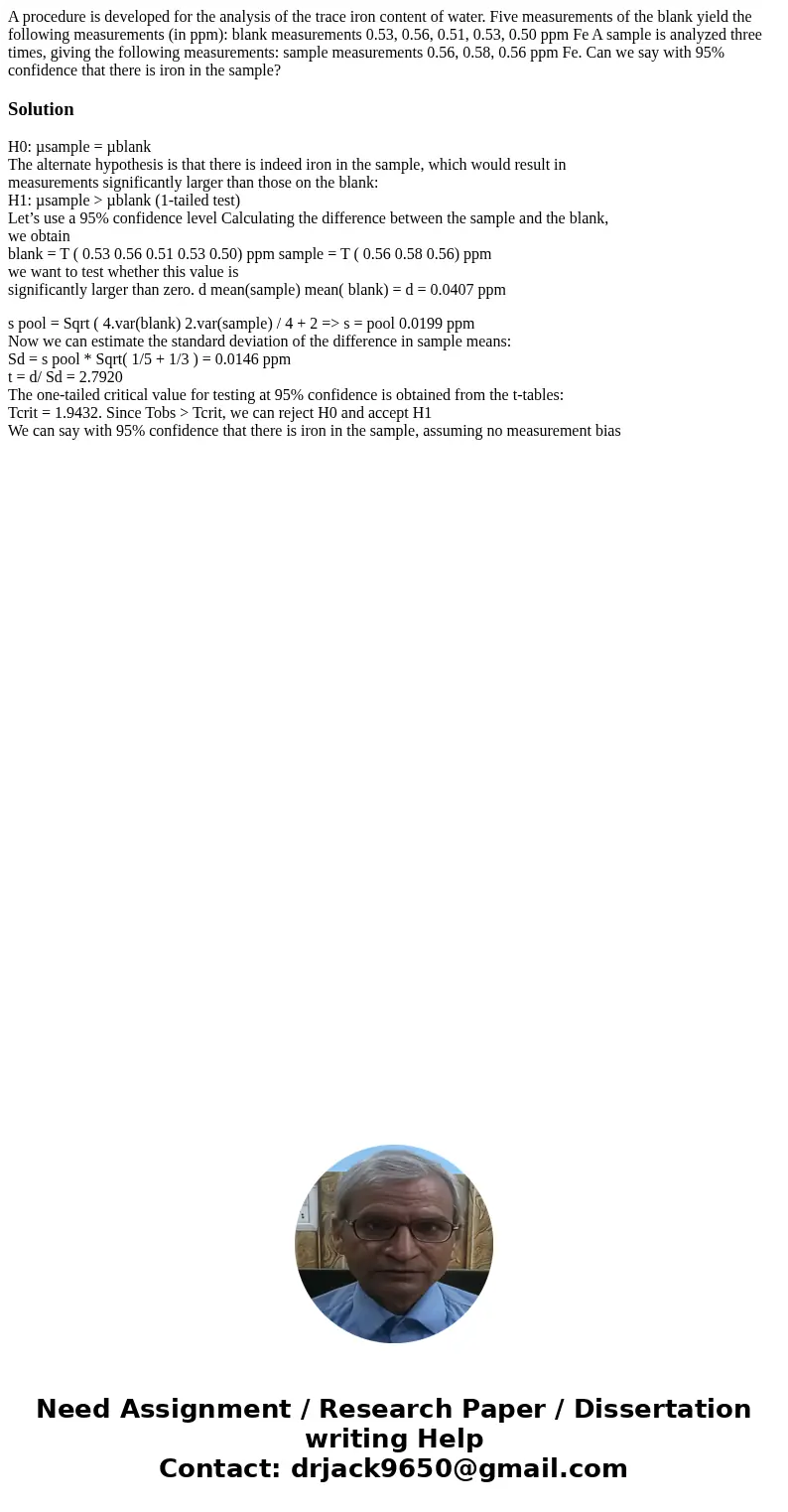A procedure is developed for the analysis of the trace iron
A procedure is developed for the analysis of the trace iron content of water. Five measurements of the blank yield the following measurements (in ppm): blank measurements 0.53, 0.56, 0.51, 0.53, 0.50 ppm Fe A sample is analyzed three times, giving the following measurements: sample measurements 0.56, 0.58, 0.56 ppm Fe. Can we say with 95% confidence that there is iron in the sample?
Solution
H0: µsample = µblank
The alternate hypothesis is that there is indeed iron in the sample, which would result in
measurements significantly larger than those on the blank:
H1: µsample > µblank (1-tailed test)
Let’s use a 95% confidence level Calculating the difference between the sample and the blank,
we obtain
blank = T ( 0.53 0.56 0.51 0.53 0.50) ppm sample = T ( 0.56 0.58 0.56) ppm
we want to test whether this value is
significantly larger than zero. d mean(sample) mean( blank) = d = 0.0407 ppm
s pool = Sqrt ( 4.var(blank) 2.var(sample) / 4 + 2 => s = pool 0.0199 ppm
Now we can estimate the standard deviation of the difference in sample means:
Sd = s pool * Sqrt( 1/5 + 1/3 ) = 0.0146 ppm
t = d/ Sd = 2.7920
The one-tailed critical value for testing at 95% confidence is obtained from the t-tables:
Tcrit = 1.9432. Since Tobs > Tcrit, we can reject H0 and accept H1
We can say with 95% confidence that there is iron in the sample, assuming no measurement bias

 Homework Sourse
Homework Sourse